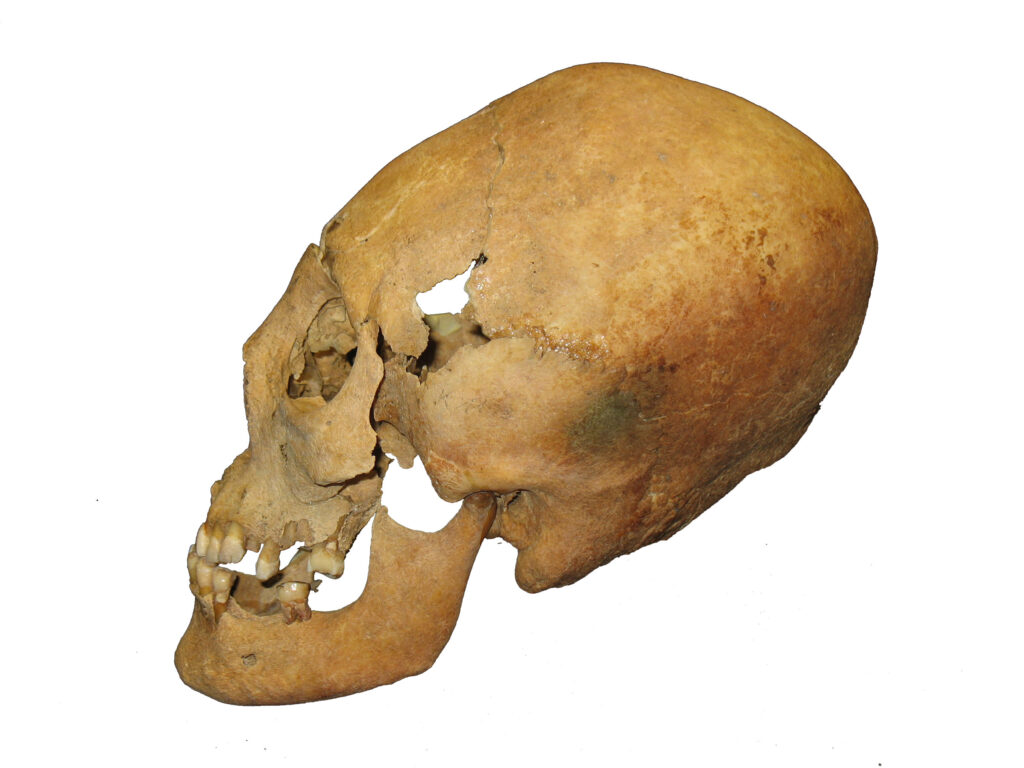The Origin of women with deformed skulls
Palaegenomic study investigates Hun invasion and female migration in the early Middle Ages of Southern Germany
After the demise of the Roman Empire and the eventful phase of the Migration Period, the period of the Early Middle Ages began in Central Europe. It is the epoch in which many settlements are founded, which subsequently develop into the villages and towns as we still know them today. In Central Europe, this epoch is commonly associated with various barbarian tribes, such as the Alamanni, Franks, and Lombards. Which populations are actually behind these in terms of population genetics has not yet been studied. An international team led by anthropologist Dr. Michaela Harbeck of the State Collection of Anthropology in Munich and population geneticist Prof. Dr. Joachim Burger of the Johannes Gutenberg University in Mainz (JGU) has now studied populations that lived in the former territory of the Roman Empire in Bavaria in the period around 500 AD and have come up with some astonishing results.
In addition to anthropologists from Mainz and Munich, the team includes Dr. Brigitte Haas-Gebhard from the Archaeological State Collection in Munich, the archaeological director of the project, as well as colleagues from the United States, Great Britain and Switzerland. However, the historical-genetic investigations revealed that the medieval individuals with skull deformities were women who had migrated from the Black Sea region to the Bavarian settlements around 500 AD. “Although there is clear evidence that there were also influences from Central or even East Asia, the genomic origin analysis points to the fact that the women with deformed skulls are genetically most similar to present-day Bulgarians and Romanians,” Burger notes, “A direct genetic influence from Central Asian Huns can only have been marginal.”

Yet these women were distinguished not only by their deformed skulls, but they also stood out for other external features, such as a much darker hair and eye color. The vast majority of the other Bavarians were blond-haired and blue-eyed, such as one finds today at best in Scandinavia.
But the migration to Bavaria did not end with these women. Only a little later, two people can be traced who have their closest genetic relatives among today’s Greeks or Turks. And again, they were women. “This is a unique example of female mobility bridging larger cultural areas,” Burger says. “We have to expect that many more hitherto unsuspected population dynamic phenomena played a part in the genesis of our early towns and villages.”
Haas-Gebhard of the Munich State Archaeological Collection has studied the grave goods and costume of the ancient Bavarians and notes, “Most of the foreign women are culturally very similar to the rest of the population and appear assimilated. From the material remains alone, we could not have reconstructed this case in this way.”
“Interestingly, there are no genetic traces in the studied early inhabitants of Bavaria that indicate a Mediterranean heritage, as could have come from soldiers of the Roman army,” Harbeck adds, concluding, “How much Celts and Romans are in these early Bavarians, however, we need to investigate further on an even broader basis.”

